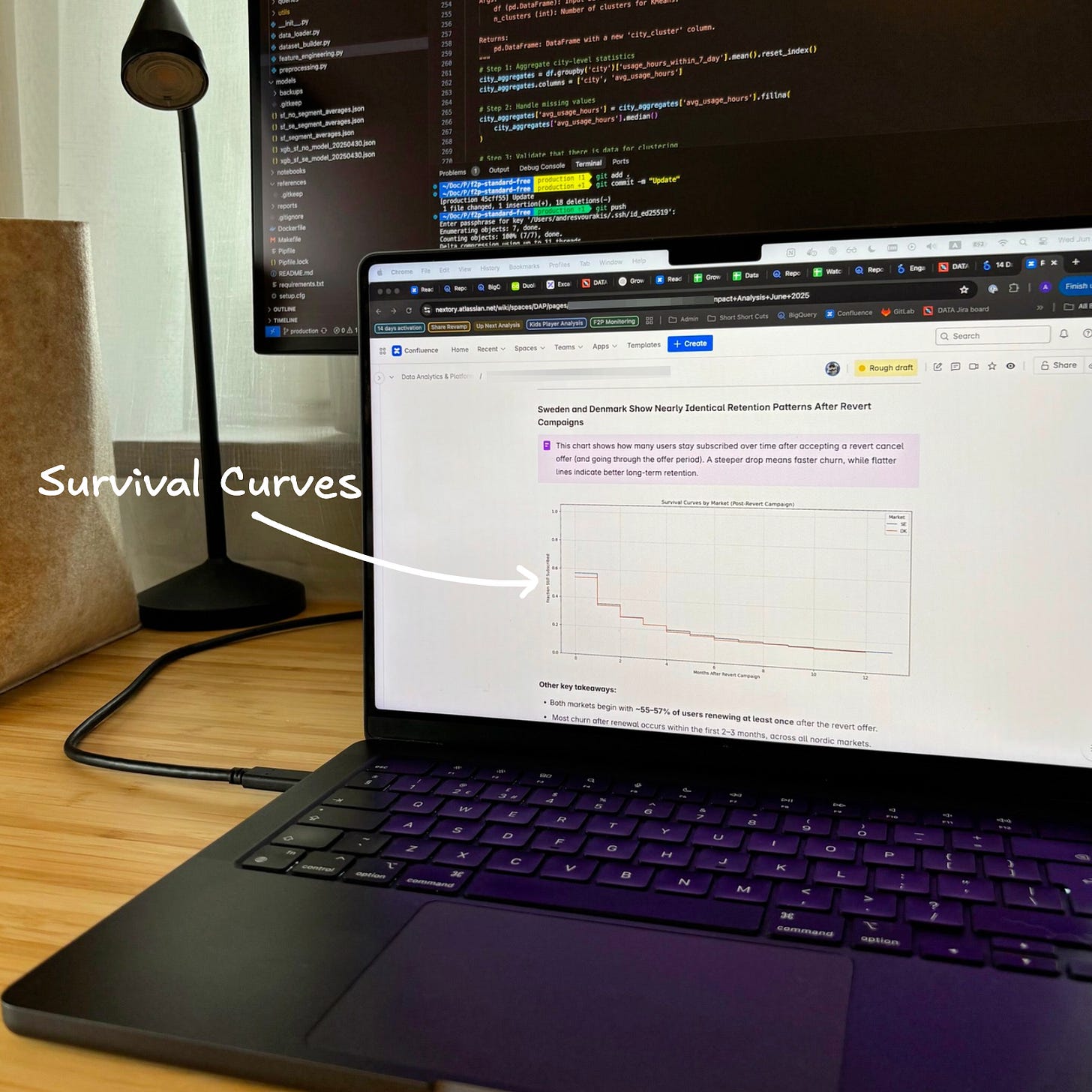Survival Analysis Is Underrated: Why Every Data Scientist in Tech Should Learn It
Learn when and how to apply each method
Most Data Scientists hear “survival analysis” and think of medical studies or churn curves.
But this technique covers so much more!
In my experience, survival analysis is one of the most versatile tools you can use in product analytics.
Just last week, I used it to support an analysis I did for the Growth team, where we tried to understand the effectiveness of our win-back campaigns.
So I thought it would be a good idea to introduce you to this statistical method and show you when to use it, and how to apply it effectively to your own analysis.
At the end, I’ll also share a 🎁 notebook with some Python examples (along with some other resources) to help you learn more effectively.
Alright, let’s get started!
1. When should you use survival analysis?
Survival analysis is great when trying to understand how long it takes for something to happen. It’s especially useful when some users haven’t done that thing yet (this is called censored data), but you still want to include them in the analysis.
Here are a few of the questions it can help you answer:
How long until users churn?
How long does it take to adopt a feature?
What’s the likelihood someone is still active X days after signup?
How long do users take to convert from free to paid?
When does engagement typically drop off after a campaign or feature release?
This is why everyone working in tech should add it to their toolkit.
In summary, survival analysis is ideal when:
You care about timing, not just whether something happens
The event might not happen for everyone (a.k.a. censored data)




